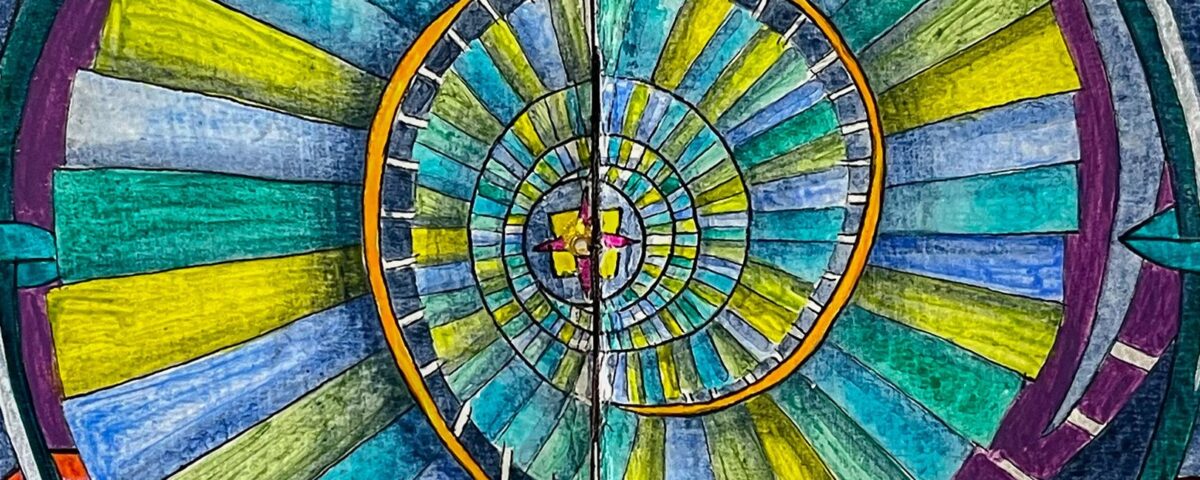
Ascending and Descending
March 28, 2025
Miracle of Maintenance Part 2 – Redefining Success
May 28, 2025I spend about 2 hours per day working on my body to maintain my mobility. If I skip my body work, my tension builds up. My walking becomes jerky and tight, I begin to lean to the left because bearing weight on my right leg feels too painful, and my mental state spirals downward. I wish I could just streamline my routine so it would take about 15 minutes per day. So much time goes into maintenance of my body, when I wish I could be doing other things. Where is the miracle in this?
It often feels like it all depends on me. My well-being, my success at maintaining the ability to walk…all depend on me. If I don’t do my body work, I will suffer. No one can do it for me. The fear begins to escalate into unhealthy self-talk: “If I don’t work hard enough, I will lose the ability to walk.” It felt like a huge defeat when I started using walking sticks two years ago. The sticks immediately relieved some of my intense leg pain, but my pride took a huge blow. I felt the shame of not having worked hard enough to maintain my mobility and the shame of my disabilities being much more evident to people around me. It feels like it is my fault that I’m going downhill. Standing (awkwardly) at its brink, the slippery slope loomed below me. First walking sticks, then eventually I’ll need more help. I can easily see the need to be in a wheelchair again. Where is the miracle in this?
I’m always seeking new ways to reduce the tension in my body because I get bored with the daily upkeep my body requires. Honestly, it is far from dramatic or interesting—certainly not material for a Netflix series! Once the intense drama of the ER and life-saving operations are past, many people face the reality that they will never be what they once were. The TV shows never document the grueling rehab routines.
Every day, I need to spend time on my exercise mat breathing, calming myself, using gentle movements, tensing and relaxing muscles. With a bit more flare, I do some basic core strengthening and active stretching. I swim…back and forth, back and forth. The victories can seem small compared to the great amount of time that goes into maintaining my mobility. I wrestle with God and search for the miracle in this maintenance.
I’ve had to learn to stay compassionately curious and to redefine success.
This is the miracle! As I walk this miracle out, I’ve come to understand it not as a consolation prize, but as one of the most freeing mindsets of my life.
First of all, I got curious about my tension. Did you know tension can be interesting!? This common human experience marks us all. Everybody gets tense every day, for normal kinds of reasons: too much driving, stressful meetings, overloaded schedules. Everyone needs to reduce tension. But when trauma barges into our experience, tension becomes a huge problem, one we might end up fighting against for the rest of our lives. This quote from Bassel van der Kolk describes me: “One of the ways the memory of helplessness is stored is as muscle tension or feelings of disintegration in the affected body areas.”[i] For years, I didn’t understand or even feel the tension that had taken up residence in my body. That is, until the tension started screaming at me to pay attention around 2017. To cope with the tension, people like me often stop sensing those parts of their body. Victims (or even power lifters and people who take part in extreme sports) numb body parts to override pain, but the body holds on to the tension, and we grow more and more brittle. This tension resulting from perceived helplessness could represent our body’s efforts to regain control. Especially if we have experienced shock trauma, our bodies tend to brace for impact. Subconsciously, we expect the next accident and tense up in preparation for it. We can unlearn these mental and physical patterns. That’s interesting! Sounds hopeful to me.
The idea of “fighting” tension does not prove to be a good analogy for the battle against physical and mental tension. I’m grateful that I’ve learned to sense my body and to retrain my mind to relax my muscles. SmartBody SmartMind helped me learn to be aware of my body (somatic awareness). The course leads you forward with tiny baby steps. The course designer, Irene Lyon, has created a safe place for people to learn to feel their bodies again. Then, clinical somatics (inspiresomatic.com) has helped me learn to relax. I use these practices multiple times. Every day. Becoming compassionately curious about my chronic tension has opened me up to a much deeper understanding of what my body has gone through and opened doors of physical learning by which I can now feel sensations other than tension! I now feel comfortable in my own body.
I’m starting to see the miracle! Are you?
I’ll see you in a few weeks, and we will talk about redefining success.
[i] Bassel van der Kolk. The Body Keeps the Score: Brain, Mind, and Body in the Healing of Trauma. (New York, NY: Penguin Books, 2014), 318.


